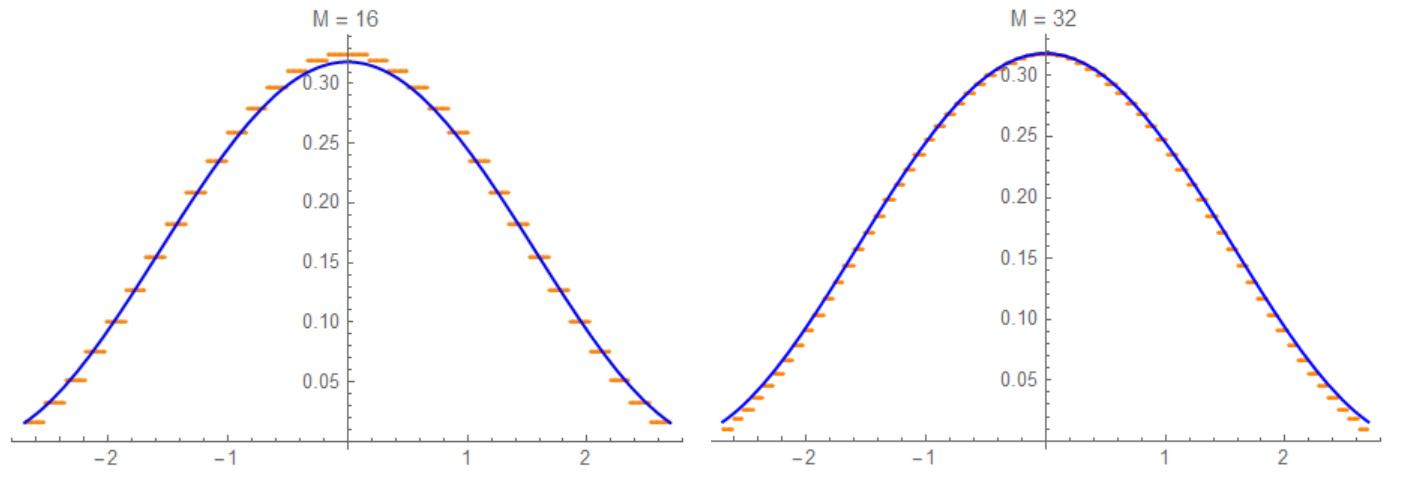My question: How do I use Mathematica to find the solution to Case 2? As a cross check for the code, does it verify the solution in Case I?
Case 1: We will look at an easier problem first. Let $|\alpha|, |\beta| \leq \alpha_c, \alpha_c \leq \pi$. I want to solve for $\rho(\beta)$ in the following equation, where $P$ denotes the principal value of the integral:
$$\frac{2\sin{\alpha}}{\lambda} = P\int_{-\alpha_c}^{\alpha_c} d\beta \, \rho(\beta) \, \cot{\frac{\alpha -\beta}{2}}$$
Note here that $\rho(\beta)$ satisfies the following constraint: . $$\int_{-\alpha_c}^{\alpha_c}d\beta \, \rho(\beta) =1, \quad \rho(\beta) \geq 0$$
As given from eqns 23 - 30 in Gross and Witten's paper, there are two separate analytic functions which solve this integral equation for $\lambda \geq 2$, and $\lambda \leq 2$. The solution $\rho(\alpha)$ is given by:
\begin{align} \rho(\alpha) & =\frac{2}{\pi \lambda} \cos{\frac{\alpha}{2}} \left( \frac{\lambda}{2} - \sin^2 \frac{\alpha}{2}\right)^{1/2}, \quad \lambda \leq 2 \quad \text{with} \quad |\alpha| < 2 \sin^{-1}\left( \frac{\lambda}{2}\right)^{1/2}\\ & = \frac{1}{2\pi} \left( 1 + \frac{2}{\lambda}\cos{\alpha}\right), \quad \lambda \geq 2\quad |\alpha| \leq \pi. \end{align}
Case 2: Here's my problem. Let $|\alpha|, |\beta| \leq \alpha_c, \alpha_c \leq \pi$. I want to solve for $\rho(\beta)$ in the following equation, where $P$ denotes the principal value of the integral:
$$\frac{2\sin{\alpha}}{\lambda} = P \,k\int_{-\alpha_c}^{\alpha_c} d\beta \, \rho(\beta) \, \frac{\cot{\frac{\alpha -\beta}{2}}}{\left(\sin{\frac{\alpha -\beta}{2}}\right)^k} $$
Here $k \in \mathbb{N}$. As before, again $\rho(\beta)$ satisfies the following constraint: . $$\int_{-\alpha_c}^{\alpha_c}d\beta \, \rho(\beta) =1, \quad \rho(\beta) \geq 0$$




IntegrateandNIntegrateboth complain the integral doesn't converge:Integrate[(Cot[(Pi/2 - b)/2] Sin[b/2 + Pi/2])/Sin[(Pi/2 - b)/2], {b, -Pi, Pi}, PrincipalValue -> True],NIntegrate[(Cot[(Pi/2 - b)/2] Sin[b/2 + Pi/2])/Sin[(Pi/2 - b)/2], {b, -Pi, Pi/2, Pi}, Method -> PrincipalValue]. $\endgroup$Sin[b/2 + Pi/2]isn't the solution, right? I would suggest to cross check any method with Case 1, it might be helpful. I don't think that the question itself is wrong. $\endgroup$